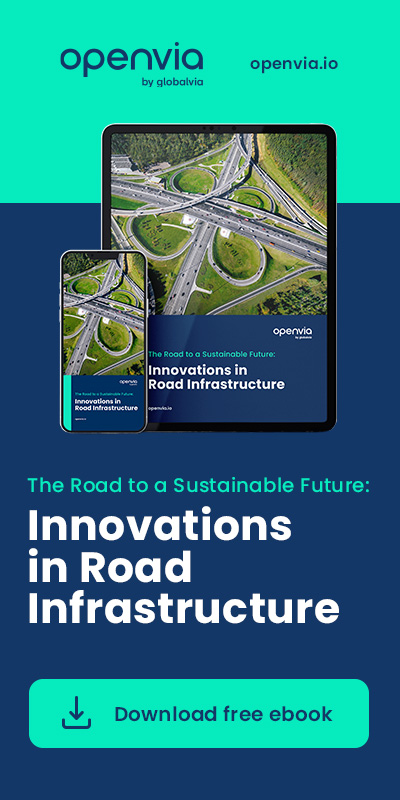Negative effects of road deterioration
Road infrastructure is the backbone of modern transportation, and its condition is crucial to the safe and efficient movement of people and goods. For years there has been an increasing integration of technology to improve road safety and reduce the number of incidents.
One of the latest improvements has come with the addition of predictive analytics to technological data.IoT and Machine Learning create synergies that enable risk situation prediction, prevention of relevant incidents and translates
IoT in road infrastructure
The Internet of Things (IoT) refers to the interconnection of devices over the Internet, enabling real-time data collection and sharing. In the context of road infrastructure, IoT devices include sensors, cameras, monitoring systems and connected devices installed on roads, bridges, tunnels and vehicles.
These devices collect a wealth of data on traffic conditions, weather conditions, wear and tear on structures, and other factors critical to road safety. These sophisticated sensory devices, when strategically placed on road networks, generate a comprehensive, real-time data acquisition framework that serves as the basis for agile and informed decision making.
IoT provides access to a multifaceted spectrum of road and traffic dynamics, including vehicle flow, environmental conditions, driving patterns, and traffic congestion.
For example, pressure sensors installed on a bridge can detect changes in the structure, such as small deformations, which could indicate progressive deterioration. Moisture sensors on roads can alert to water accumulation, signaling a risk of aquaplaning.
The adoption of IoT in road infrastructure not only enables more detailed and accurate monitoring, but also opens the door to the application of advanced analytics to improve road safety. This is where Machine Learning comes into play.
How IoT and Machine Learning work together
Machine Learning is a branch of artificial intelligence that focuses on developing algorithms capable of learning from data and making predictions or decisions based on it. When we combine IoT and Machine Learning, we get a powerful tool for predictive analytics in road infrastructure.
The data collected by IoT devices is huge in quantity and complex in nature. Machine Learning is able to process and analyze this data, identifying patterns and trends that would not be evident to the naked eye. This synergy between IoT and ML makes it possible to create predictive models that can anticipate risky situations before they become serious problems.
A Machine Learning algorithm trained on historical bridge data can identify patterns that indicate accelerated deterioration in certain weather conditions. In this way, it is possible to forecast when the bridge will need maintenance, long before damage is visible or critical.
Another case would be the use of ML to analyze traffic and weather data, predicting areas prone to accidents due to adverse conditions, such as heavy rain or fog.
Benefits of applying technology to roads
The joint application of IoT and Machine Learning in road infrastructure offers numerous benefits that go beyond simply improving road management. Some of the most significant ones are detailed below:
1. Accident prevention
Predictive analytics based on real-time data can identify dangerous areas on roads, such as curves with a high incidence of accidents or flood-prone stretches. With this information, authorities can take preventive measures, such as improving signage, installing safety barriers or carrying out structural interventions.
2. Proactive maintenance
Instead of performing infrastructure maintenance on a fixed schedule or waiting for malfunctions to occur, predictive analytics enables a more proactive approach. Machine Learning models can predict deterioration of roads, bridges and tunnels, allowing engineers to plan repairs before problems become costly and dangerous emergencies.
3. Traffic optimization
IoT and ML can also optimize traffic flow, reducing travel times and improving transportation efficiency. For example, traffic management systems can adjust traffic lights in real time, based on collected traffic data, to minimize congestion and reduce congestion.
4. Cost reduction
Implementing IoT and ML technologies in road infrastructure can significantly reduce costs in the long run. By preventing accidents and performing proactive maintenance, the need for emergency repairs is avoided and the lifespan of infrastructure is extended, resulting in considerable savings for managing entities.
5. Improved emergency response
IoT systems can quickly detect and notify about road incidents, such as accidents or natural disasters, enabling a faster and more efficient response by emergency services. This can save lives by reducing response time and better coordinating rescue actions.
The future of predictive analytics in road infrastructure
The future of predictive analytics in road infrastructure is promising and exciting. As technology advances, the integration of IoT and Machine Learning will become even more sophisticated, offering new possibilities for improving the safety and efficiency of roads and infrastructure.
One of the most anticipated future developments is the integration of autonomous vehicles with intelligent infrastructure. Autonomous vehicles will be able to communicate directly with roads, bridges and other vehicles, exchanging real-time data to optimize traffic and prevent accidents. Machine Learning algorithms will be essential to interpret this data and make instant decisions to improve road safety.
In addition, digital twin technology is expected to play a crucial role in the future of road infrastructure. A digital twin is a virtual replica of a physical infrastructure that is updated in real time with real-world data.
These digital twins will allow engineers and planners to monitor and simulate different scenarios, testing maintenance and improvement strategies without affecting real-world operations.
Based on the data generated by IoT devices, we can simulate anomalous conditions in the infrastructure through the predictions of previously trained ML models. This endows the digital twin with more capabilities; not only to see what is happening in real time, but to see how the digital twin would behave in adverse situations, without compromising the integrity of the infrastructure.
Conclusion
Predictive analytics in road infrastructure using the Internet of Things (IoT) and Machine Learning separately offer significant benefits. IoT enables real-time collection of critical data related to infrastructure condition, traffic conditions and environmental factors, enabling more immediate and accurate management. Machine Learning, on the other hand, processes large volumes of historical data to identify patterns and make predictions, making it possible to anticipate risk situations based on past trends.
However, when these two technologies are combined, the results exceed what each can achieve individually. While IoT provides a continuous stream of up-to-date data, Machine Learning uses that information in real time to generate more accurate and contextualized predictions. This synergy makes it possible not only to detect and prevent problems before they occur, but also to optimize the infrastructure dynamically. For example, maintenance needs can be anticipated with greater accuracy and road incidents can be foreseen based on current data and complex patterns that would otherwise go unnoticed. In short, the combination of IoT and Machine Learning creates a comprehensive approach to predictive road analytics, achieving improvements in safety and efficiency that would be impossible to achieve using these technologies separately.






